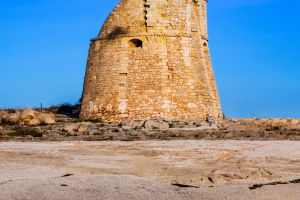Cable-stayed bridges are some of the most awe-inspiring feats of modern engineering.
These sleek, towering structures seem to defy gravity, holding up massive roadways with what appears to be a delicate web of cables.
But what's the secret behind their stability and durability?
Let's dive into the science and engineering principles that make these bridges not just possible, but incredibly reliable.
The Basics of Cable-Stayed Bridges
At first glance, cable-stayed bridges may look similar to suspension bridges, but they are fundamentally different in design and function. While both types of bridges use cables to support the roadway, cable-stayed bridges have a more direct and efficient way of distributing weight. The main difference lies in how the cables are attached. In a cable-stayed bridge, cables run directly from the roadway up to the towers (or pylons), rather than being draped over towers like in a suspension bridge.
Cable Stayed Bridges [How they work] [Cable Stayed vs Suspension Bridges]
Video by Engineering Concepts
This design allows for a few key advantages:
1. Load Distribution: In a cable-stayed bridge, the weight of the roadway is directly transferred to the towers. This results in a more balanced distribution of forces, reducing the strain on any single part of the structure.
2. Stiffness and Stability: The direct connection between the cables and the roadway provides greater stiffness, meaning the bridge is less likely to sway under heavy loads or strong winds. This makes cable-stayed bridges ideal for locations with high wind speeds or heavy traffic.
3. Cost-Effectiveness: Because cable-stayed bridges don't require massive anchorages to hold the cables (as in suspension bridges), they can be more cost-effective to build. Additionally, they can be constructed faster due to their simpler design.
The Role of Cables
The cables in a cable-stayed bridge are the star of the show. Typically made of high-strength steel, these cables must support both the weight of the roadway and any additional loads, such as vehicles, pedestrians, and even the forces of nature like wind and earthquakes. The cables are anchored at the top of the towers and the edges of the bridge deck, creating a fan-like pattern that not only distributes the load but also adds to the bridge's aesthetic appeal.
Engineers carefully calculate the tension in each cable to ensure that the bridge remains balanced. This requires precise engineering and a deep understanding of the forces at play. If the tension in one cable is too high or too low, it can lead to instability or even structural failure. Therefore, constant monitoring and maintenance are essential to ensure the longevity of the bridge.
The Towers: Pillars of Strength
The towers, or pylons, are the backbone of the cable-stayed bridge. These vertical structures must be incredibly strong to bear the load transferred from the cables. The design and material of the towers are critical factors in the overall stability of the bridge. Most modern cable-stayed bridges use reinforced concrete or steel for the towers, as these materials provide the necessary strength and durability.
The height of the towers is another crucial consideration. Taller towers allow for longer spans between them, reducing the number of support structures needed and creating a more open and visually appealing design. However, taller towers also require stronger materials and more precise engineering to ensure they can withstand the increased forces acting upon them.
How It All Comes Together
The genius of the cable-stayed bridge lies in its simplicity. By connecting the cables directly from the towers to the roadway, engineers create a structure that is both elegant and incredibly strong. The balance of forces is key – the weight of the roadway pulls down on the cables, while the tension in the cables pulls up on the roadway, creating a stable and durable bridge.
Moreover, the flexibility in design allows engineers to create bridges that are not only functional but also visually stunning. From the iconic Millau Viaduct in France to the striking Sutong Bridge in China, cable-stayed bridges have become symbols of modern engineering prowess.
Lykkers, cable-stayed bridges are more than just engineering marvels; they are a testament to human ingenuity and the power of science. By understanding the principles of load distribution, material strength, and force balance, engineers can create structures that not only stand the test of time but also inspire awe in all who see them.


